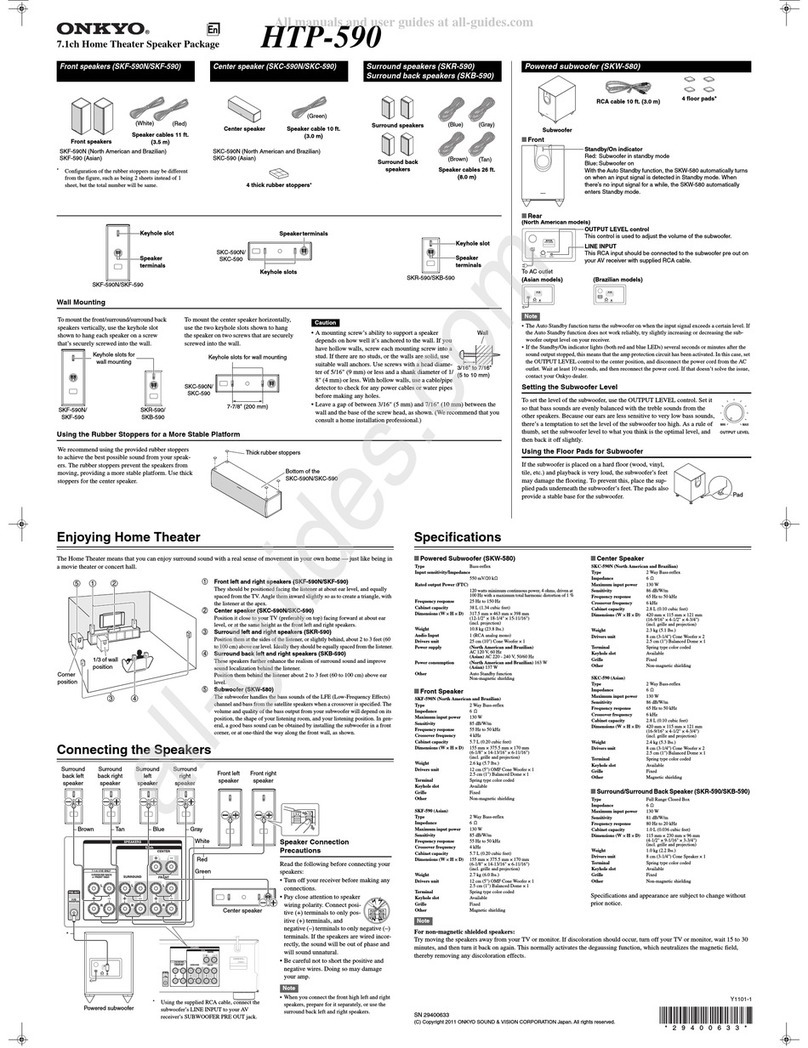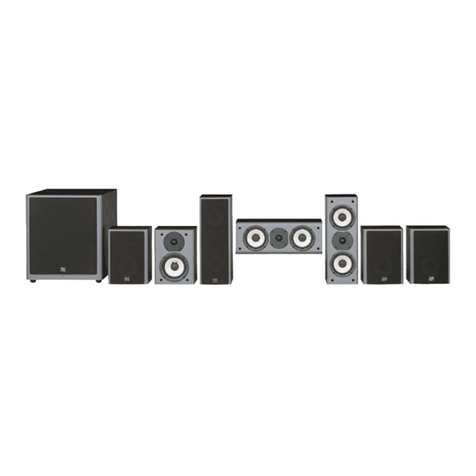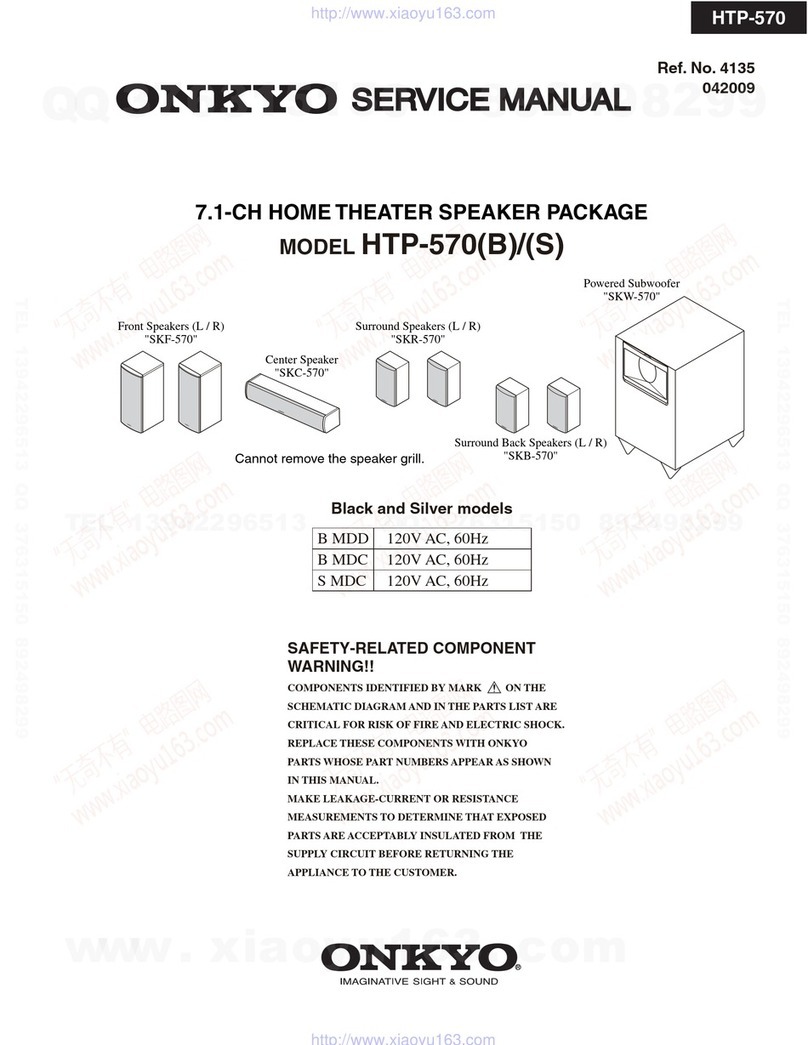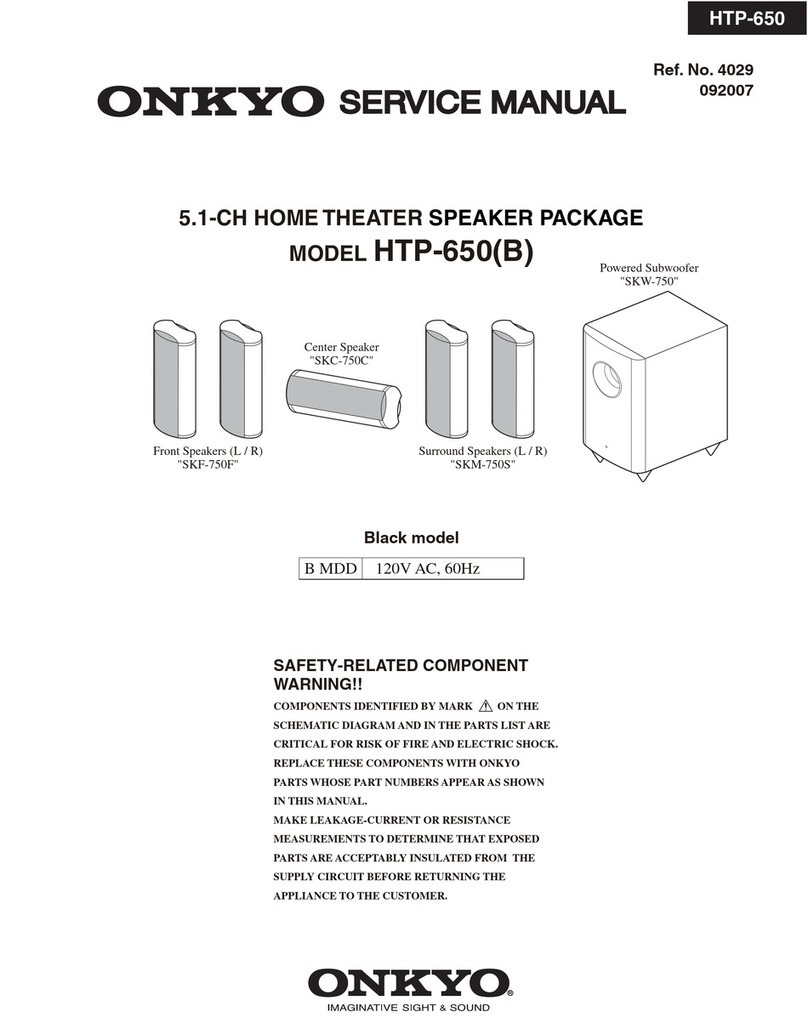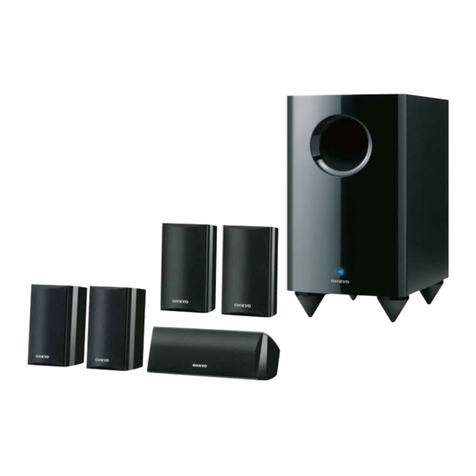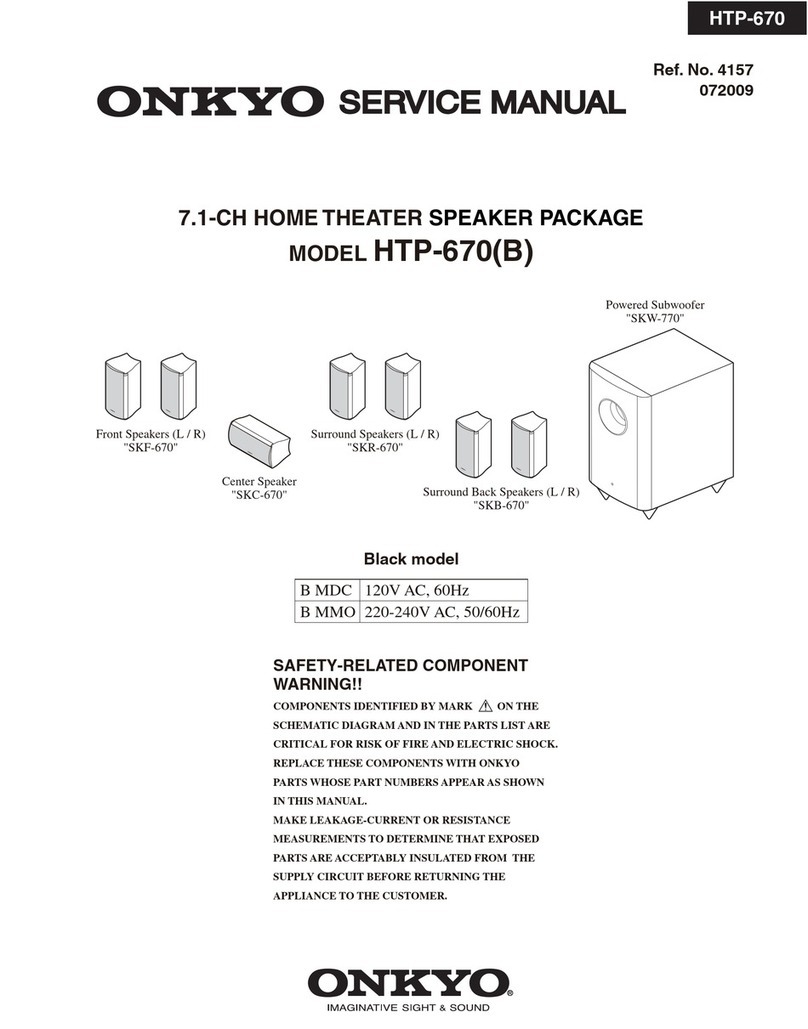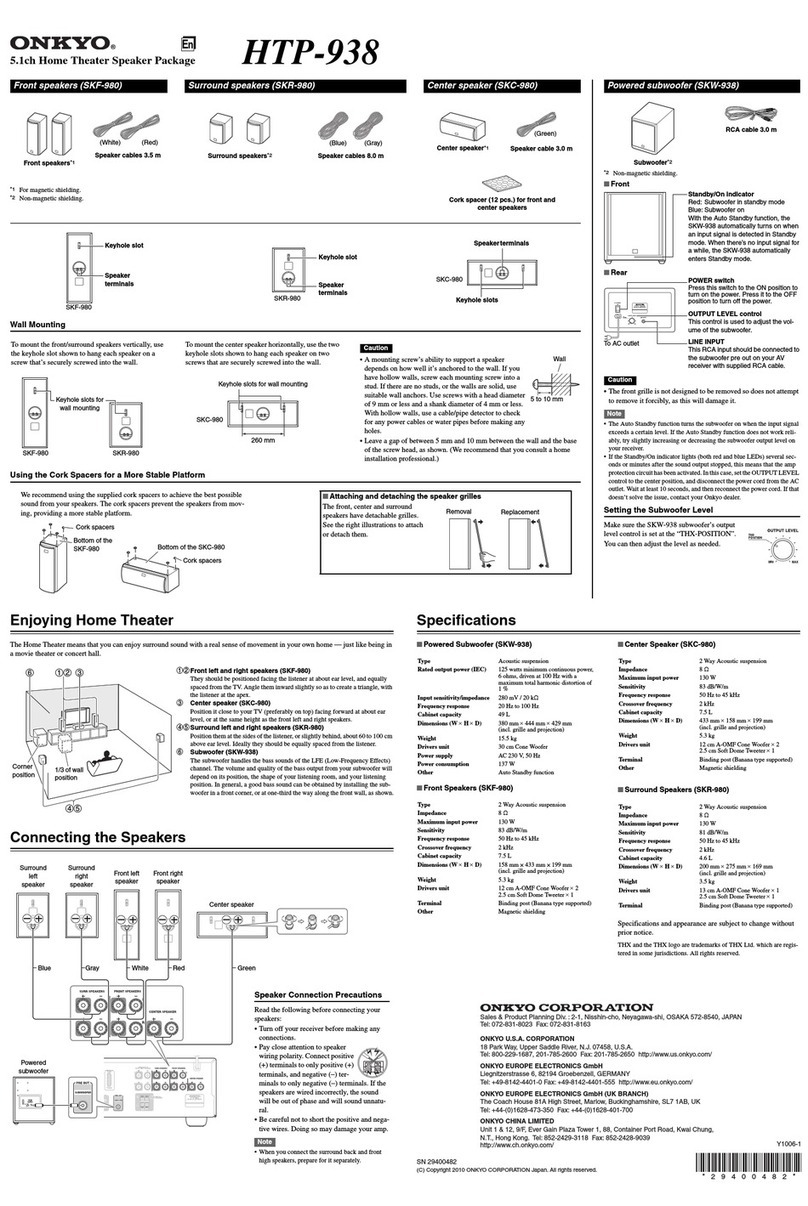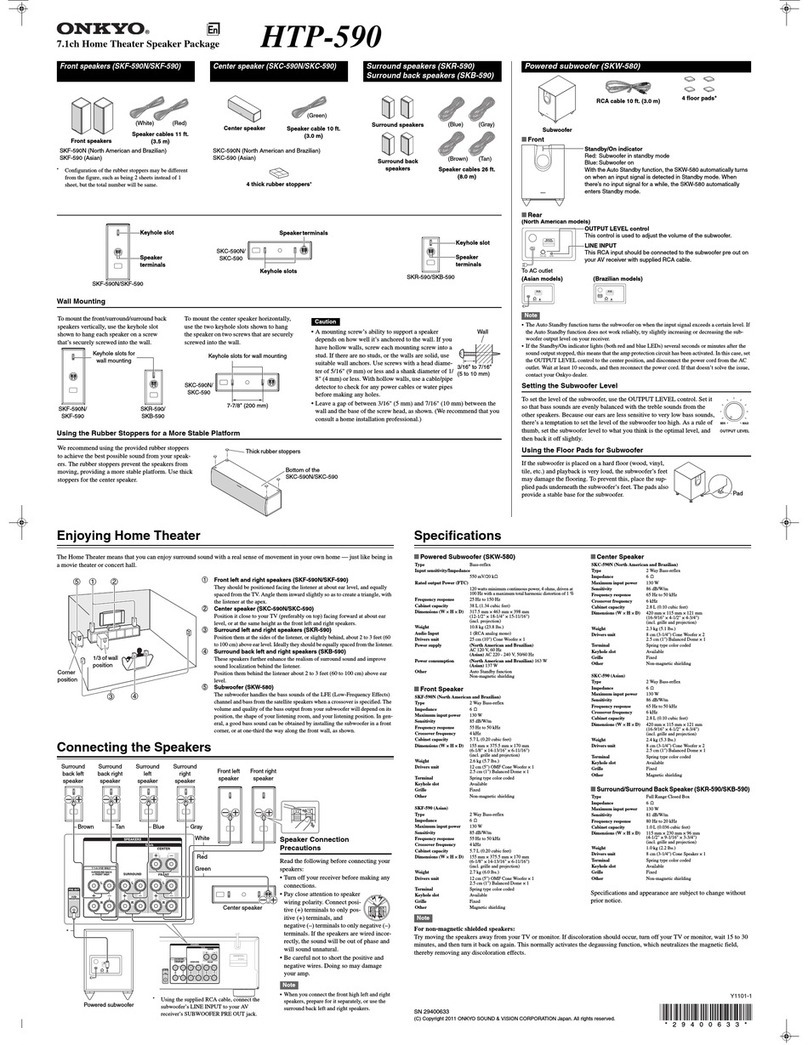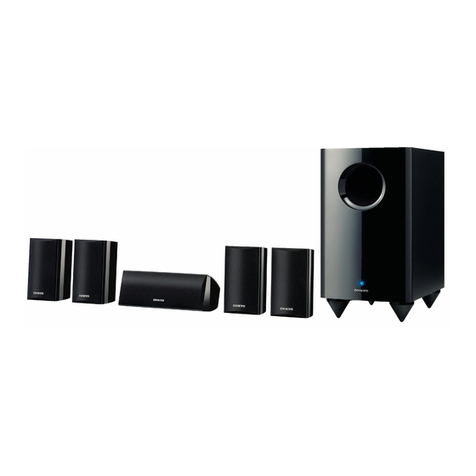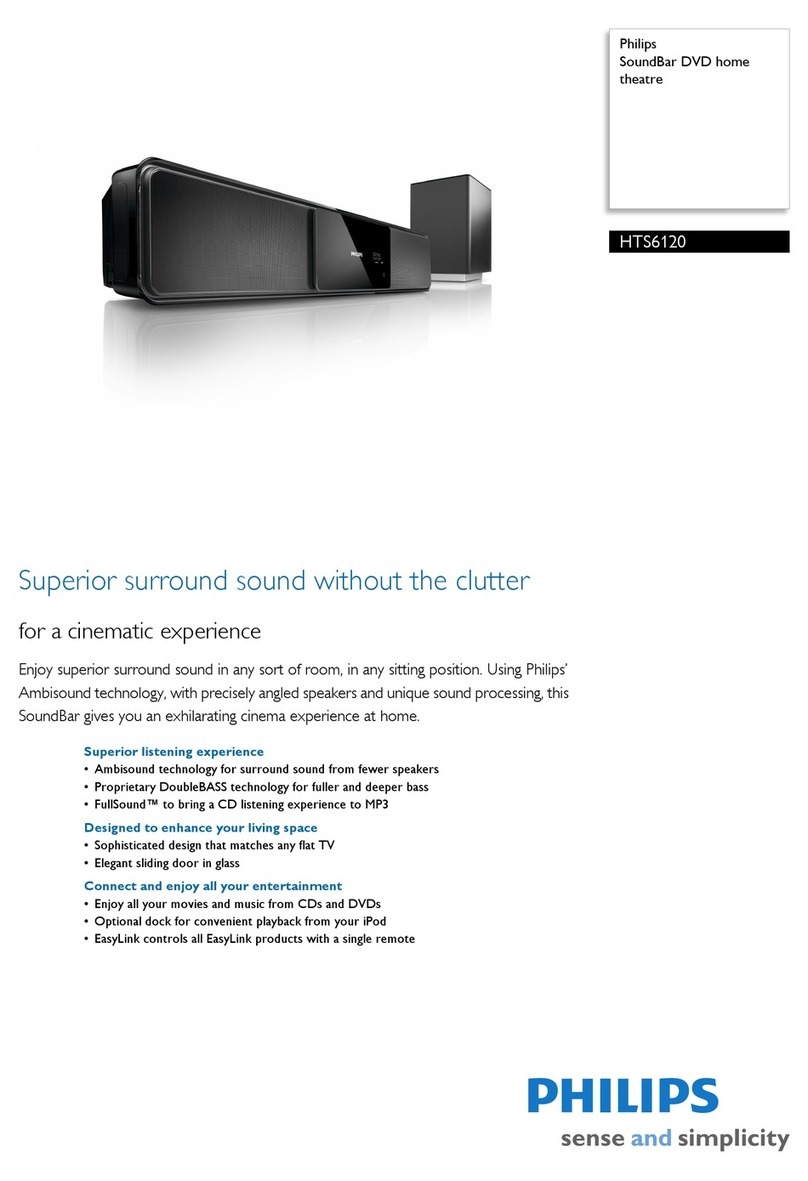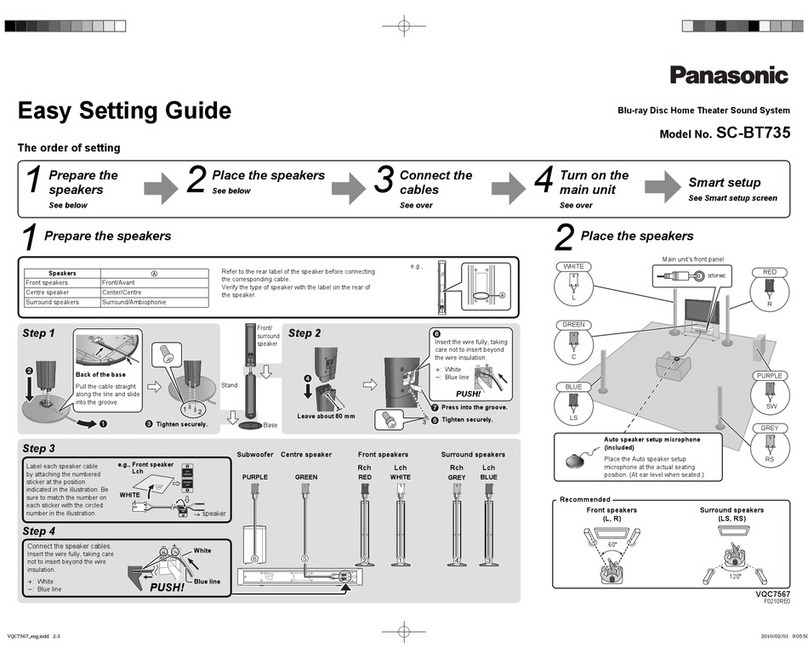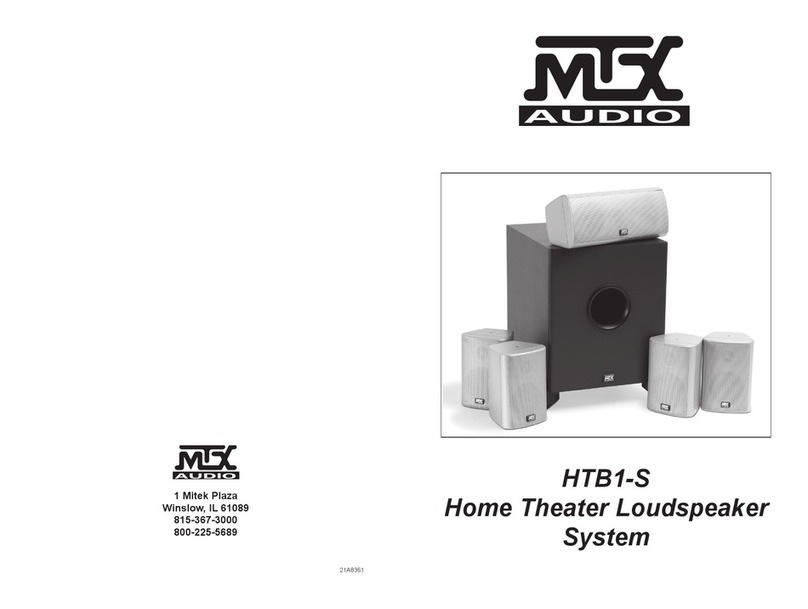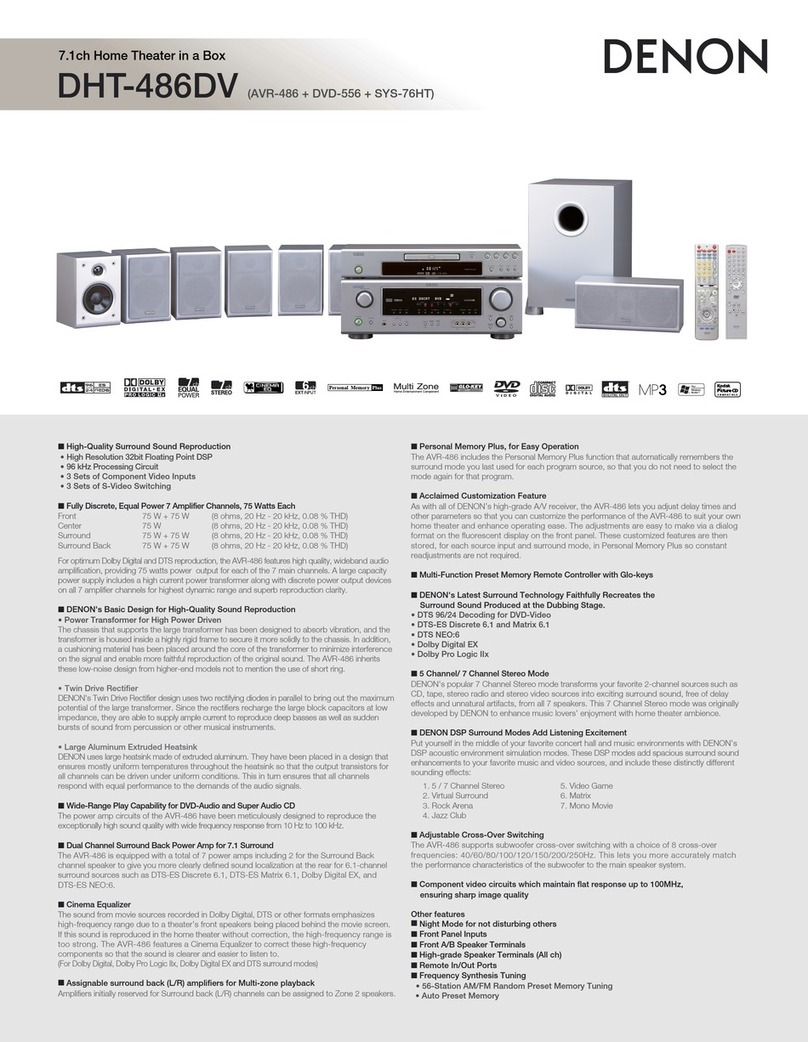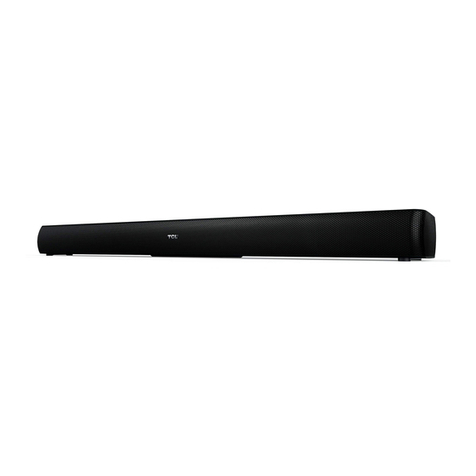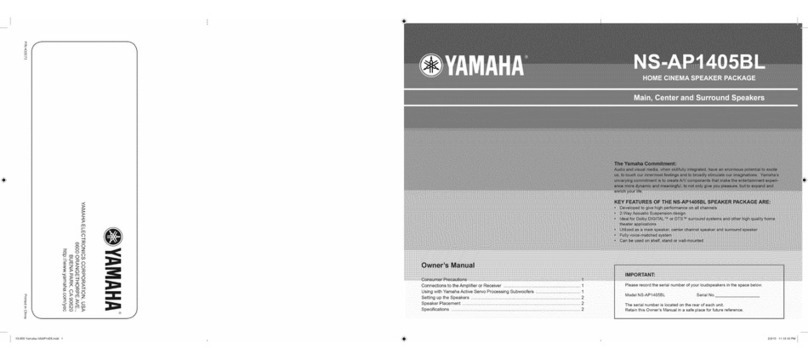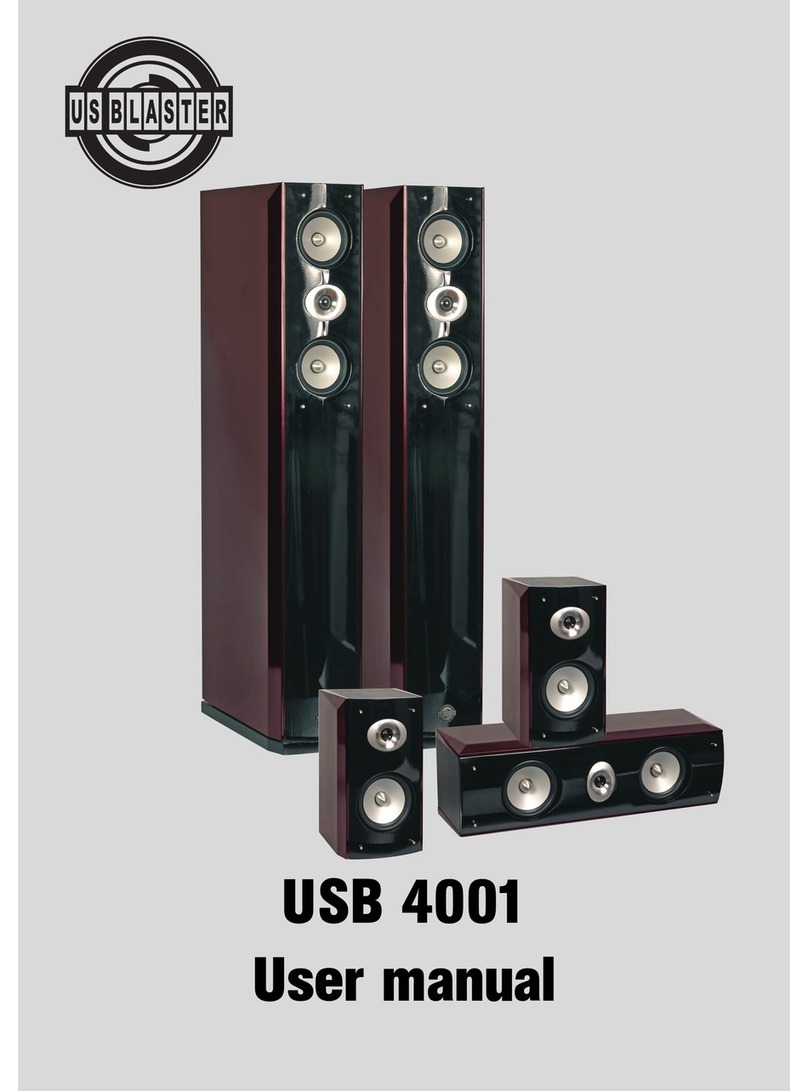SPECIFICATIONS
HTP-420
Type :
Input sensitivity/impedance :
Maximum output power :
Frequency response :
Cabinet capacity :
Dimensions (W x H x D) :
Weight :
Driver unit :
Power supply :
America :
Others :
Power consumption :
America :
Australia :
Others :
Other :
Bass-reflex with built-in
power amplifier
220 mV / 15 k ohm
150 W (Dynamic Power)
30 Hz - 150 Hz
1.15 cubic feet (32.5 L)
9-1/4" x 20-3/8" x 16-3/16"
(235 x 518 x 411 mm)
28.2 lbs. (12.8 kg)
8 inch Cone Woofer
AC 120 V, 60 Hz
AC 230-240 V, 50 Hz
AC 220-230 V, 50/60 Hz
75 W
77 W
77 W
Auto Standby function
Front Speaker (SKF-420F)
Type :
Impedance :
Maximum input power :
Output sound pressure level :
Frequency response :
Crossover frequency :
Cabinet capacity :
Dimensions (W x H x D) :
Weight :
Drivers unit :
Terminal :
Other :
2-way Bass-reflex
8 ohm
100 W
84 dB/W/m
60 Hz - 50 kHz
5 kHz
0.2 cubic feet (5.6L)
4-7/8" x 18-5/16" x 7-1/16"
(124 x 465 x 179 mm)
7.5 lbs. (3.4 kg)
4 inch Cone Woofer x 2
1 inch Balanced Dome tweeter
Color-coded push type
Magnetic shielding
Type :
Impedance :
Maximum input power :
Output sound pressure level :
Frequency response :
Crossover frequency :
Cabinet capacity :
Dimensions (W x H x D) :
Weight :
Drivers unit :
Terminal :
Other :
2 Way Bass-reflex
8 ohm
100 W
84 dB/W/m
60 Hz - 50 kHz
5 kHz
0.2 cubic feet (5.6 L)
17-1/8" x 5-1/8" x 7-1/16"
(435 x 130 x 179 mm)
7.5 lbs. (3.4 kg)
4 inch Cone Woofer x 2
1 inch Balanced Dome tweeter
Color-coded push type
Magnetic shielding
Surround Speaker (SKM-420S)
Type :
Impedance :
Maximum input power :
Output sound pressure level :
Frequency response :
Crossover frequency :
Cabinet capacity :
Dimensions (W x H x D) :
Weight :
Drivers unit :
Terminal :
2-way Bass-reflex
8 ohm
100 W
82 dB/W/m
60 Hz - 50 kHz
5 kHz
0.08 cubic feet (2.3 L)
5-13/16" x 11" x 4-7/8"
(147 x 280 x 124 mm)
3.7 lbs. (1.7 kg)
4 inch Cone Woofer
1 inch Balanced Dome tweeter
Color-coded push type
Specifications and appearance are subject to change
without prior notice.
Powered Subwoofer (SKW-420) Center Speaker (SKC-420C)
